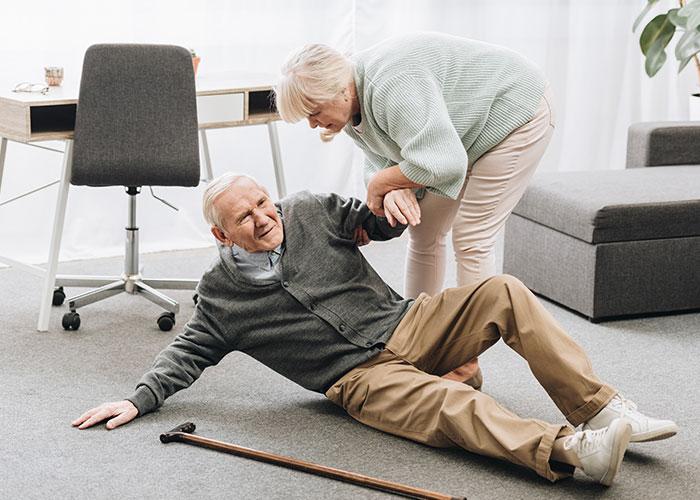As our loved ones age, their needs evolve, making it essential for us to create environments that prioritize their safety and comfort. One of the most critical aspects of ensuring the well-being of elderly individuals is adapting their homes to meet mobility needs. Our homes should be sanctuaries where independence flourishes, not obstacles that pose risks. In this article, we will explore practical strategies and thoughtful modifications that can transform living spaces into safer havens for seniors. From simple adjustments to more comprehensive renovations, we’ll delve into the features that promote mobility, prevent accidents, and ultimately enhance the quality of life for our elderly family members. Join us on this journey to redefine home safety and empower our aging loved ones to navigate their spaces with confidence and ease.
Understanding Mobility Challenges in Aging Adults
As individuals age, their bodies undergo significant changes that can impact mobility. Declining muscle strength, joint flexibility, and balance are common issues that can lead to increased difficulty in performing daily activities. Many elderly individuals face challenges such as fear of falling, which can further restrict their movements and reduce their independence. Understanding these mobility challenges is crucial for caregivers and family members who want to create a supportive environment that maximizes safety and accessibility.
To effectively address mobility issues among aging adults, it’s essential to consider various aspects of their living environment. Modifications can significantly improve safety and functionality, making everyday tasks easier. Potential adaptations include:
- Installing grab bars in bathrooms to aid in transfers.
- Ensuring clear pathways by removing clutter and installing non-slip flooring.
- Lever-style door handles that are easier to grip than traditional knobs.
- Adjustable furniture that can be modified to suit individual needs.
By implementing these changes, families can help their elderly loved ones maintain greater independence and confidence in their mobility, ultimately enhancing their quality of life.
Essential Home Modifications for Improved Accessibility
Creating a safe and accessible home environment for the elderly requires thoughtful modifications that cater to their mobility needs. Installing grab bars in bathrooms, hallways, and near stairs can significantly reduce the risk of falls. Widening doorways to accommodate wheelchairs or walkers ensures easy navigation throughout the home. Additionally, consider replacing traditional doorknobs with lever-style handles, which are much easier to use for those with limited hand strength. Non-slip flooring is another essential update to prevent slips and falls, with options like rubber mats or textured tiles offering ideal solutions.
Smart home technology can also play a vital role in enhancing accessibility. Voice-activated systems allow seniors to control lights, thermostats, and security systems without needing to physically reach switches or devices. Automated door openers provide seamless entry and exit, while reclining chairs with lift mechanisms assist those who struggle to stand from a seated position. Below is a simple table showcasing potential modifications:
| Modification | Benefit |
|---|---|
| Grab Bars | Increases support and stability |
| Widened Doorways | Facilitates movement with mobility devices |
| Lever Doorknobs | Improves accessibility for those with limited grip |
| Voice-Activated Technology | Enhances ease of use for controlling home functions |
Implementing Technology Solutions for Enhanced Safety
In today’s fast-paced world, technology offers numerous solutions that enhance safety for the elderly within their homes. By integrating smart home devices, we can effectively address mobility limitations and create a secure environment. Consider the implementation of motion-sensor lighting, which automatically illuminates pathways during the night, reducing the risk of falls. Additionally, smart security systems equipped with cameras and alarms provide peace of mind, alerting caregivers or family members in case of any unexpected incidents.
Moreover, incorporating advanced health monitoring devices can significantly elevate the safety net for seniors living independently. Wearable technology, such as vital sign monitors and emergency alert buttons, empowers elderly individuals to maintain their autonomy while ensuring immediate assistance when needed. To visualize the multifaceted benefits of these technologies, the following table outlines key solutions and their associated advantages:
| Technology Solution | Benefits |
|---|---|
| Motion-Sensor Lighting | Illuminates pathways, minimizing fall risks. |
| Smart Security Systems | Provides real-time alerts and monitoring. |
| Health Monitoring Devices | Tracks health metrics and alerts for emergencies. |
| Smart Home Assistants | Facilitates hands-free communication and control. |
Creating a Supportive Environment Through Community Engagement
Building a supportive environment for the elderly begins with fostering strong community engagement. Local organizations and community members can collaborate to create initiatives that enhance safety in the homes of the elderly. By organizing workshops and seminars, individuals can learn more about the specific mobility needs of older adults, and how to adapt their living spaces accordingly. Neighborhood networks can play a pivotal role in sharing resources and solutions, such as:
- Creating accessible pathways and entrances
- Promoting the installation of grab bars and ramps
- Facilitating home safety assessments
Furthermore, integrating technology through community engagement can significantly improve elderly safety. Smart home devices can be introduced to monitor movements and ensure assistance is readily available during emergencies. By partnering with local tech companies, communities can offer training sessions on how to use these devices effectively. The following table outlines some smart technologies beneficial for elderly safety:
| Technology | Purpose | Benefits |
|---|---|---|
| Smart Door Locks | Secure entry | Prevents unauthorized access |
| Fall Detection Sensors | Emergency alerts | Immediate response to falls |
| Video Doorbells | Visitor identification | Enhanced security and peace of mind |
In Summary
enhancing safety for the elderly within their homes is not just a necessary adjustment; it’s a compassionate commitment to their well-being and independence. By thoughtfully adapting living spaces to meet mobility needs, we can significantly reduce the risk of accidents and elevate the quality of life for our senior loved ones. From simple modifications like installing grab bars and improving lighting to more extensive renovations like widening doorways and eliminating tripping hazards, every small change can make a big difference.
As we advocate for a proactive approach to home safety, it’s essential to involve elderly individuals in the planning process. Their input not only fosters a sense of autonomy but also ensures that adaptations truly cater to their unique preferences and requirements.
By embracing these transformative strategies, we can create environments that are not only safer but also more empowering for seniors, allowing them to thrive in the comfort of their own homes. As we look to the future, let’s champion the importance of accessible living, ensuring that our elderly community can enjoy their golden years with dignity, independence, and a sense of security.
Thank you for exploring this critical topic with us. If you have experiences or ideas to share on enhancing elderly safety in the home, we invite you to join the conversation in the comments below! Your insights may inspire others to take meaningful action in their own spaces.






